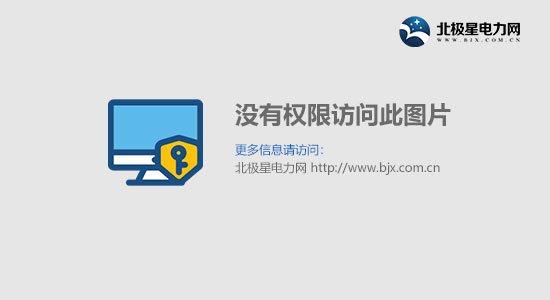2023年職稱英語考試閱讀理解試題及答案

In 18th-century colonial America, those who wanted to become physicians either learned as personal students from established professionals or went abroad to study in the traditional schools of London, Paris, and Edinburgh. Medicine was first taught formally by specialists at the University of Pennsylvania, beginning in 1765, and in 1767 at Kings College , the first institution in the colonies to give the degree of doctor of medicine. Following the American Revolution, the Columbia medical faculty was combined with the College of Physicians and Surgeons, chartered in 1809, which survives as a division of Columbia University.
In 1893 the Johns Hopkins Medical School required all applicants to have a college degree and was the first to afford its students the opportunity to further their training in an attached teaching hospital. The growth of medical schools attached with established institutions of learning went together with the development of proprietary schools of medicine run for personal profit, most of which had low standards and poor facilities. In 1910 Abraham Flexner, the American education reformer, wrote Medical Education in the United States and Canada, exposing the poor conditions of most proprietary schools. Subsequently, the American Medical Association and the Association of American Medical Colleges laid down standards for course content, qualifications of teachers, laboratory facilities, connection with teaching hospitals, and licensing of medical professionals that survive to this day.
By the late 1980s the U.S. and Canada had 142 4-year medical colleges recognized by the Liaison Committee on Medical Education to offer the M.D. degree; during the 1987-88 academic year, 47,262 men and 25,686 women entered these colleges and an estimated 11,752 men and 5,958 women were graduated. Graduates, after a year of internship, receive licenses to practice if they pass an examination given either by a state board or by the National Board of Medical Examiners.
練習(xí):
1. In 18th-century America,
A) there was no higher institution of learning which taught medicine.
B) there were already a few higher institutions of learning which taught medicine.
C) those higher institutions of learning which taught medicine were better than those in Europe.
D) those higher institutions of learning did not give the degree of doctor of medicine.
2. In the 19th-century, all American medical schools
A) began to give their students chances for training in hospitals.
B) had good teachers and fine facilities
C) had large numbers of students.
D) None of the above is true.
3. The American Medical Association and the Association of American Medical Colleges were Established
A) to ban those proprietary schools of medicine.
B) to build up relations between medical schools and hospitals.
C) to ensure the quality of medical teaching and practice.
D) to prevent some medical schools from making too much profit.
4. In the present-day America, graduates from medical schools
A) have to work in hospitals for a year and pass an examination before they can be recognized as qualified doctors.
B) have to be licensed by the national Board of Medical Examiner before they can serve their internship in hospital.
C) have to pass an examination given by both a state board and the National Board of Medical Examiners.
D) None of the above is true.
5. This passage is largely about
A) how difficult it is to become a doctor in America.
B) how American medical education has developed in history
C) how nice the American medical education system is.
D) how to become a good doctor.
Keys: BDCAB
In 18th-century colonial America, those who wanted to become physicians either learned as personal students from established professionals or went abroad to study in the traditional schools of London, Paris, and Edinburgh. Medicine was first taught formally by specialists at the University of Pennsylvania, beginning in 1765, and in 1767 at Kings College , the first institution in the colonies to give the degree of doctor of medicine. Following the American Revolution, the Columbia medical faculty was combined with the College of Physicians and Surgeons, chartered in 1809, which survives as a division of Columbia University.
In 1893 the Johns Hopkins Medical School required all applicants to have a college degree and was the first to afford its students the opportunity to further their training in an attached teaching hospital. The growth of medical schools attached with established institutions of learning went together with the development of proprietary schools of medicine run for personal profit, most of which had low standards and poor facilities. In 1910 Abraham Flexner, the American education reformer, wrote Medical Education in the United States and Canada, exposing the poor conditions of most proprietary schools. Subsequently, the American Medical Association and the Association of American Medical Colleges laid down standards for course content, qualifications of teachers, laboratory facilities, connection with teaching hospitals, and licensing of medical professionals that survive to this day.
By the late 1980s the U.S. and Canada had 142 4-year medical colleges recognized by the Liaison Committee on Medical Education to offer the M.D. degree; during the 1987-88 academic year, 47,262 men and 25,686 women entered these colleges and an estimated 11,752 men and 5,958 women were graduated. Graduates, after a year of internship, receive licenses to practice if they pass an examination given either by a state board or by the National Board of Medical Examiners.
練習(xí):
1. In 18th-century America,
A) there was no higher institution of learning which taught medicine.
B) there were already a few higher institutions of learning which taught medicine.
C) those higher institutions of learning which taught medicine were better than those in Europe.
D) those higher institutions of learning did not give the degree of doctor of medicine.
2. In the 19th-century, all American medical schools
A) began to give their students chances for training in hospitals.
B) had good teachers and fine facilities
C) had large numbers of students.
D) None of the above is true.
3. The American Medical Association and the Association of American Medical Colleges were Established
A) to ban those proprietary schools of medicine.
B) to build up relations between medical schools and hospitals.
C) to ensure the quality of medical teaching and practice.
D) to prevent some medical schools from making too much profit.
4. In the present-day America, graduates from medical schools
A) have to work in hospitals for a year and pass an examination before they can be recognized as qualified doctors.
B) have to be licensed by the national Board of Medical Examiner before they can serve their internship in hospital.
C) have to pass an examination given by both a state board and the National Board of Medical Examiners.
D) None of the above is true.
5. This passage is largely about
A) how difficult it is to become a doctor in America.
B) how American medical education has developed in history
C) how nice the American medical education system is.
D) how to become a good doctor.
Keys: BDCAB









